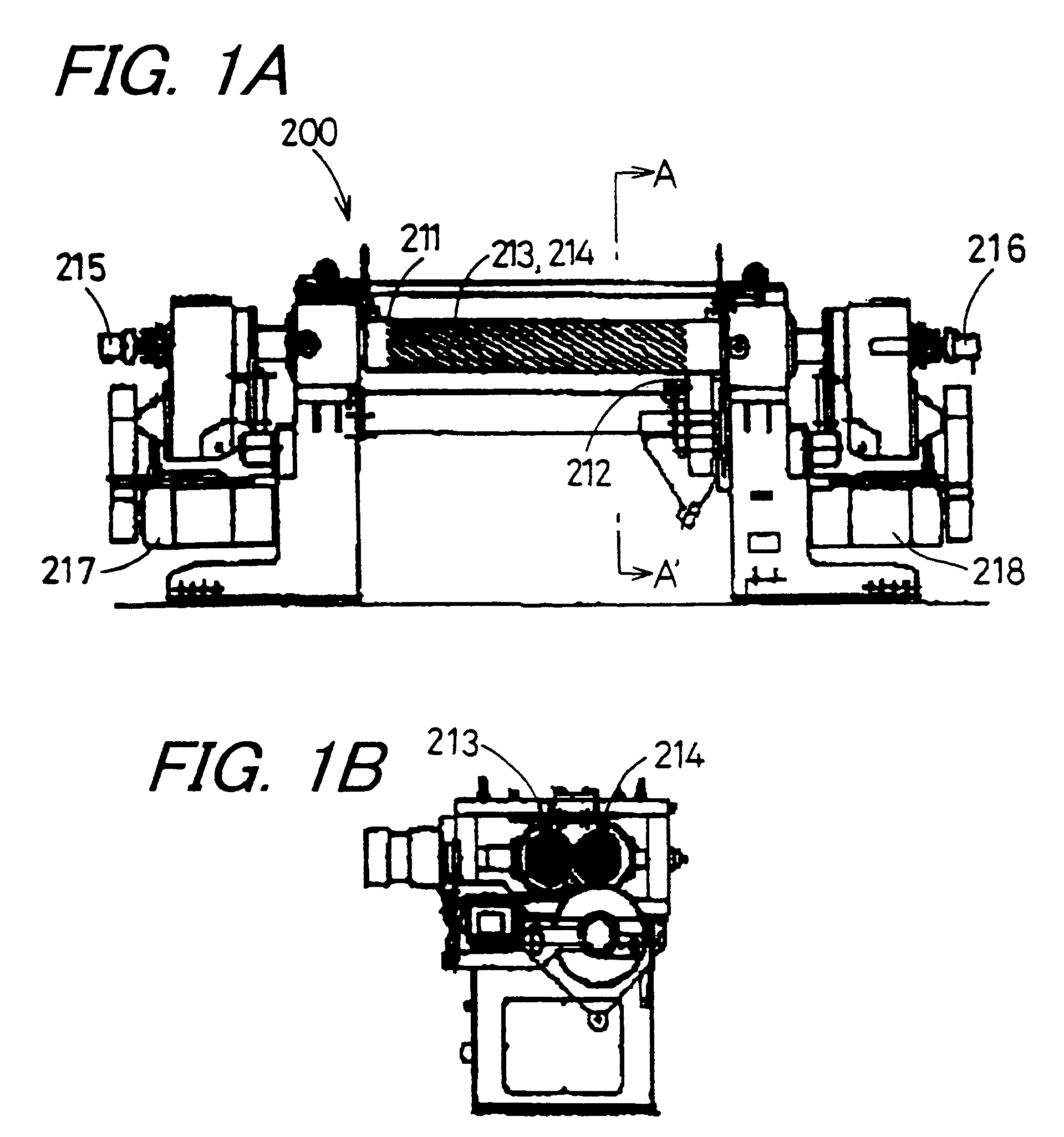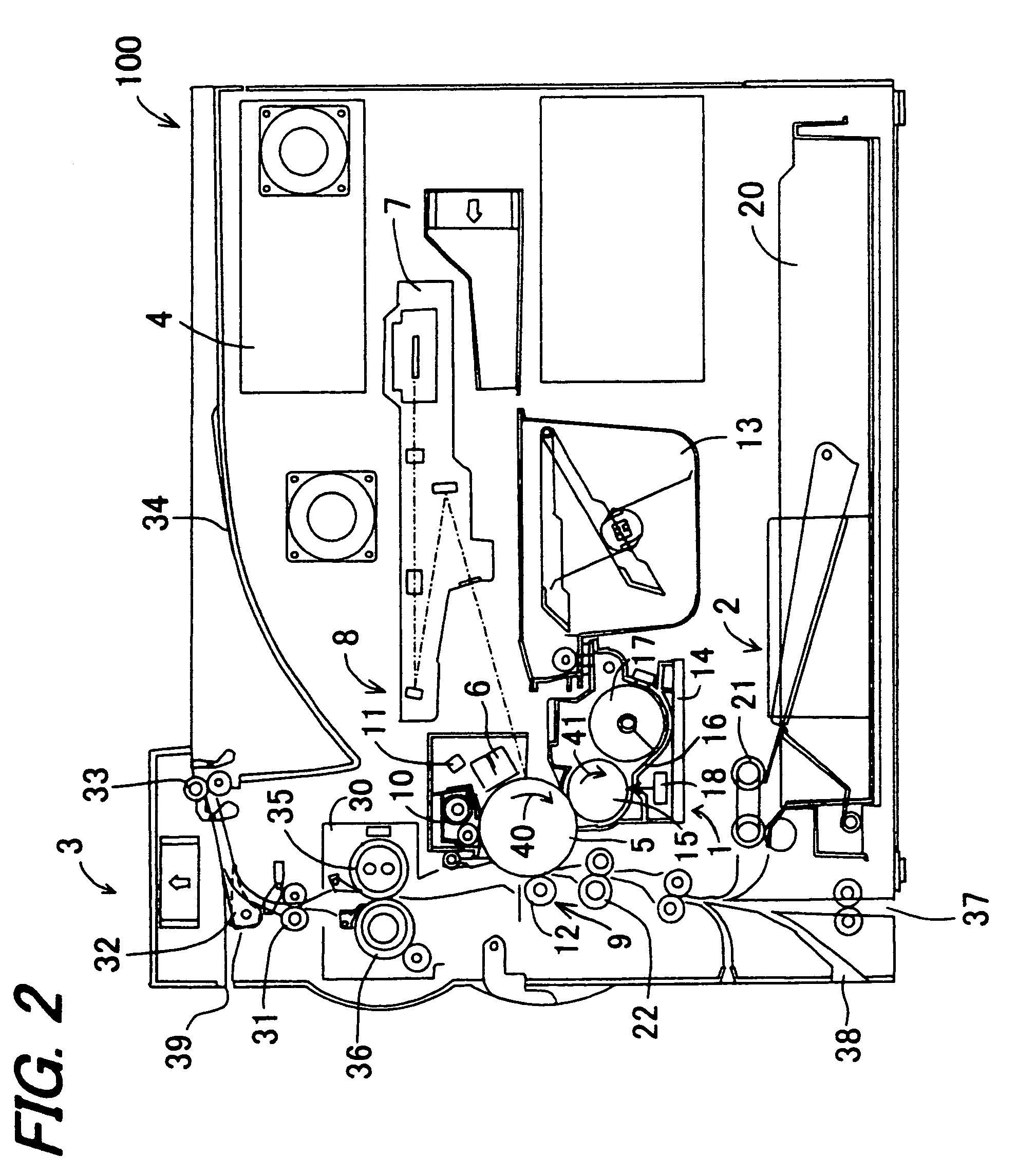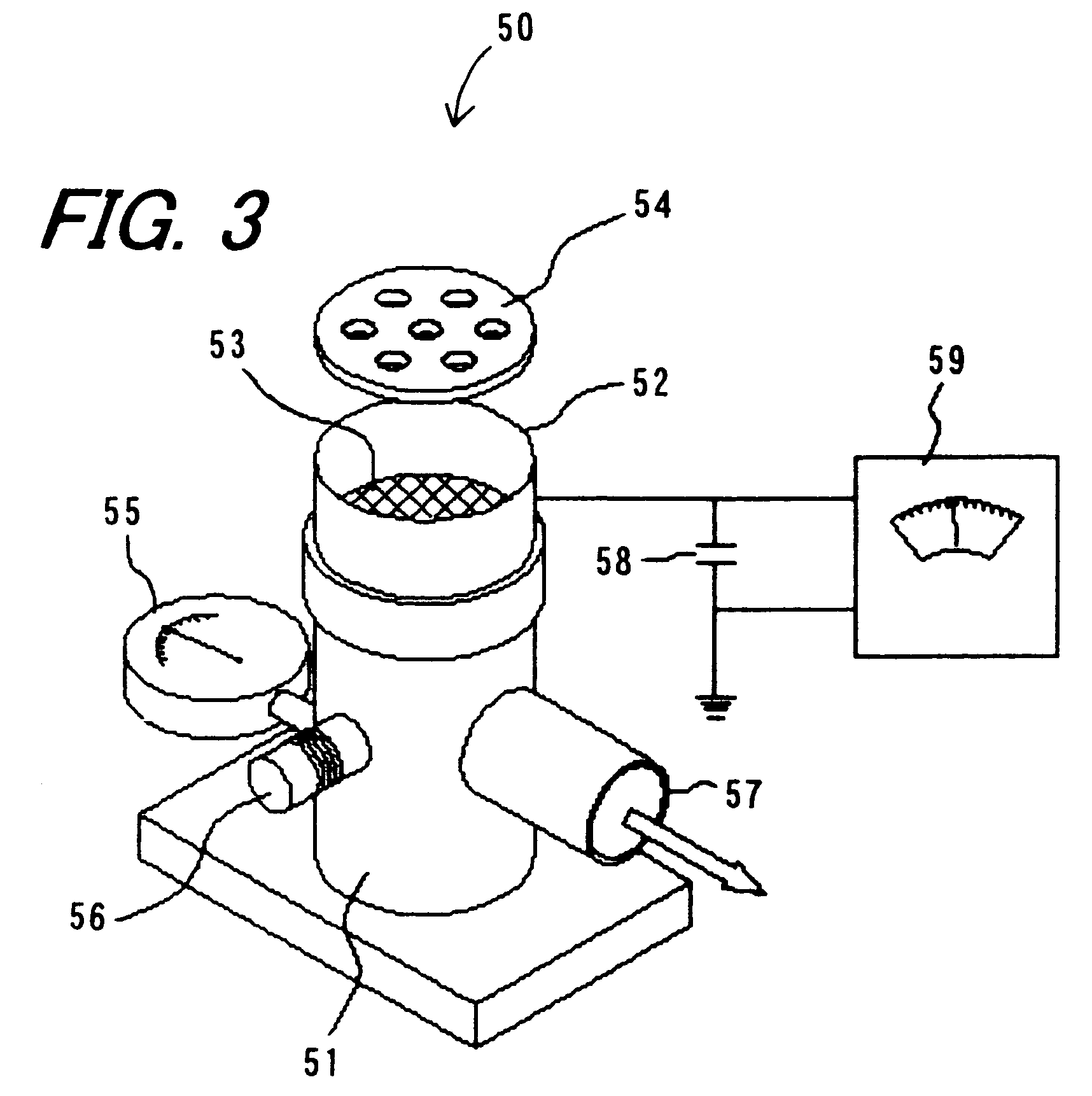Two-component developer and two-component developing apparatus using the same
a technology of two components and developing apparatus, applied in the field of two-component developer and two-component developing apparatus, can solve the problems of image fogging and toner scattering, too small charge amount of toner, and low electrical resistance of toner, so as to excellent adhesiveness, and suppress image density insufficiency
- Summary
- Abstract
- Description
- Claims
- Application Information
AI Technical Summary
Benefits of technology
Problems solved by technology
Method used
Image
Examples
example 1
[0165][Production of Toner]
[0166]10 kg of raw material that was weighed at a proportion of 40 parts by weight of carbon black (product name: #44, particle diameter: 24 nm manufactured by Mitsubishi Chemical Co., Ltd) with respect to 60 parts by weight of polyester resin (product name: EP208, manufactured by Sanyo Chemical Industries Ltd.) was mixed for 3 minutes at 700 rotation of the agitating blade per minute (700 rpm) with HENSCHEL MIXER. The obtained raw material mixture was supplied in a predetermined amount to a continuous two-roller type kneader as shown in FIGS. 1A and 1B with a table feeder and was melted and kneaded and thus a kneaded product was obtained. This kneaded product was cooled, and then roughly ground in a hummer type grinder, using a screen having a pore diameter of 2 mm, and thus a kneaded and roughly ground product was obtained.
[0167]The running conditions of the continuous two-roll type are as follows:
[0168]Roll diameter: 0.12 m
[0169]Effective roll length: 0...
example 2
[0184]The two-component developer of Example 2 was produced in the same manner as Example 1, except that when producing the carrier, the mixing amount of the silicone resin was changed to 65 parts by weight, and that the mixing amount of the acrylic resin was changed to 30 parts by weight.
example 3
[0185]The two-component developer of Example 3 was produced in the same manner as Example 1, except that when producing the carrier, the mixing amount of the silicone resin was changed to 45 parts by weight, and that the mixing amount of the acrylic resin was changed to 50 parts by weight.
PUM
 Login to View More
Login to View More Abstract
Description
Claims
Application Information
 Login to View More
Login to View More - R&D
- Intellectual Property
- Life Sciences
- Materials
- Tech Scout
- Unparalleled Data Quality
- Higher Quality Content
- 60% Fewer Hallucinations
Browse by: Latest US Patents, China's latest patents, Technical Efficacy Thesaurus, Application Domain, Technology Topic, Popular Technical Reports.
© 2025 PatSnap. All rights reserved.Legal|Privacy policy|Modern Slavery Act Transparency Statement|Sitemap|About US| Contact US: help@patsnap.com



